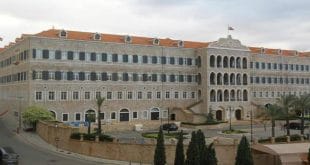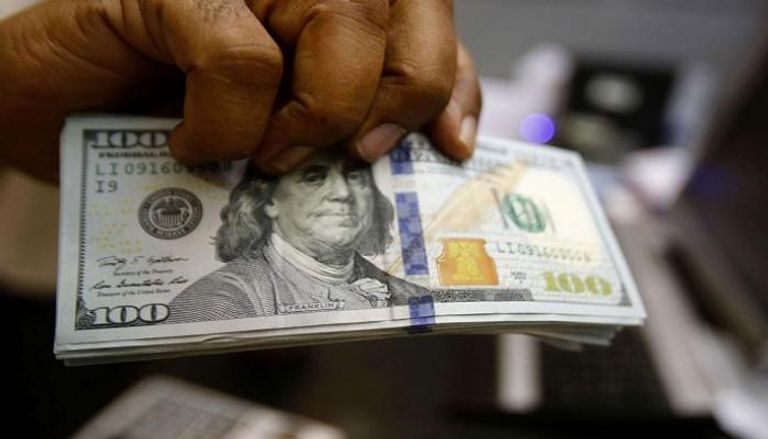لبنان يعود إلى 1997… خسائر اقتصادية “كارثية” وسعر صرف الدولار في خطر!
لفت تصريح الأمين العام للهيئات الاقتصادية، نقولا شماس، الأنظار مساء أمس الخميس، حيث أعلن أن لبنان قد أضاع 27 سنة من النمو الاقتصادي وعاد إلى العام 1997. وأشار إلى أن الخسائر المحققة في هذا السياق تقدر بـ10 مليارات دولار. لكن ماذا يعني قوله إن النمو عاد إلى العام 1997، وما هي تفاصيل الخسائر، وكيف يؤثر ذلك على سعر صرف الدولار؟
في هذا الإطار، أكد الخبير المالي والاقتصادي الدكتور أنيس أبو دياب، في حديثه لـ”ليبانون ديبايت”، أن تقديرات الخسائر الاقتصادية الناتجة عن الوضع الراهن قد تحتاج إلى مزيد من التدقيق والتفصيل.
وأوضح أبو دياب ما قصده شماس، قائلاً: “كان الناتج المحلي الإجمالي في لبنان حوالي 16 مليار دولار في عام 1997، بعد أن بدأ في الارتفاع من 10 إلى 11 مليار دولار في عامي 1992 و1993، ووصل إلى 17-18 مليار دولار في عام 1996، ثم استمر في الصعود التدريجي حتى اليوم”.
وأعرب أبو دياب عن تحفظه على الأرقام التي قدمتها وزارة الاقتصاد، والتي تشير إلى أن حجم الخسائر يقدر بحوالي 20 مليار دولار، موضحًا أن الحجم الفعلي للخسائر قد يتراوح بين 13 و14 مليار دولار. وأكد أن تحديد حجم الخسائر بدقة لن يكون ممكنًا إلا بعد انتهاء الحرب وإجراء مسح ميداني قد يستغرق من شهرين إلى ثلاثة أشهر.
وأشار أبو دياب إلى أن الأضرار التي لحقت بالبنية التحتية والمرافق قد تصل إلى 3-4 مليارات دولار، بينما تتراوح الخسائر في القطاع الزراعي والصناعي بين 4 و5 مليارات دولار.
وأكد أبو دياب أن لبنان يحتاج اليوم لإعادة إنعاش اقتصاده بعد الحرب إلى حوالي 10 مليارات دولار، على أن تُنفذ هذه المساعدات على مراحل لضمان استيعاب الاقتصاد اللبناني لهذه الأموال دون خلق ضغوط تضخمية.
كما تناول التحديات التي تواجه القطاع الخاص في ظل الأزمة الاقتصادية، مشيرًا إلى أن العديد من المؤسسات الخاصة قد تجد صعوبة في تأمين الرواتب والأجور بدءًا من الشهر المقبل. بينما قد تتمكن بعض المؤسسات الكبرى، خصوصًا تلك التي تتمتع بالسيولة، من الوفاء بالتزاماتها، لكن مؤسسات أخرى، خاصة التي تعاني من نقص في التدفقات النقدية، ستواجه صعوبات كبيرة في دفع الرواتب.
وأشار أبو دياب أيضًا إلى أن القطاع المصرفي لا يزال معطلاً، مما يؤثر على قدرة المؤسسات في الحصول على تسهيلات مالية لدفع الأجور. وذكر أن حوالي 50% من مؤسسات القطاع الخاص قد لا تتمكن من تأمين رواتب موظفيها في هذه الظروف الاقتصادية المعقدة، مما يشكل كارثة حقيقية.
أما فيما يتعلق بسعر صرف الدولار في حال استمرت الحرب، فقد أكد أبو دياب أن الوضع ينذر بالخطر، حيث أن الأحداث الراهنة تؤثر سلبًا على إيرادات الدولة. وأشار إلى أن وزارة المال قد مددت المهلة الخاصة بالضرائب والرسوم، وهذا بدوره سيؤثر على إيرادات الدولة التي تدفع رواتب موظفيها بالدولار من قبل المصرف المركزي. وأوضح أن المصرف المركزي جمع 2 مليار دولار كاحتياطي منذ شهر تموز 2023 وحتى اليوم، لكن التساؤل يبقى حول مدى قدرته على الاستمرار، مما يترك البلاد في حالة من القلق الشديد.
المصدر: ليبانون ديبايت
Lebanon Returns to 1997… “Catastrophic” Losses and Dollar Exchange Rate in Danger!
The statement made by Nicolas Chamass, Secretary-General of the Economic Bodies, last Thursday evening caught attention as he declared that Lebanon has wasted 27 years of economic growth and has reverted to 1997. He noted that the losses incurred in this context amount to 10 billion dollars. But what does it mean to say that growth has returned to 1997, what are the details of these losses, and how does this affect the dollar exchange rate?
In this context, financial and economic expert Dr. Anis Abu Diab confirmed in a conversation with “Lebanon Debate” that estimates of economic losses resulting from the current situation may need further scrutiny and detail.
Dr. Abu Diab explained what Chamass meant, saying: “Lebanon's GDP was around 16 billion dollars in 1997, having started rising from 10 to 11 billion dollars in 1992 and 1993, and reaching 17-18 billion dollars in 1996, continuing to gradually rise until today.”
He expressed reservations about the figures provided by the Ministry of Economy, which estimate the losses at around 20 billion dollars, indicating that the actual losses may range between 13 and 14 billion dollars. He emphasized that accurately determining the extent of the losses will only be possible after the war concludes and a field survey is conducted, which could take two to three months.
Dr. Abu Diab pointed out that damage to infrastructure and facilities could reach 3-4 billion dollars, while losses in the agricultural and industrial sectors might range between 4 and 5 billion dollars.
He asserted that Lebanon today needs around 10 billion dollars to revive its economy post-war, with the assistance to be implemented in stages to ensure that the Lebanese economy can absorb this funding without creating inflationary pressures.
He also discussed the difficulties faced by the private sector amid the economic crisis, noting that many private enterprises may struggle to secure salaries and wages starting next month. While some large institutions, particularly those with liquidity, might be able to meet their obligations, others, especially those lacking adequate cash flow, will face significant challenges in paying salaries.
Dr. Abu Diab further pointed out that the banking sector remains paralyzed, impacting the ability of institutions to obtain financial facilities to pay wages. He estimated that about 50% of private sector businesses may not be able to provide salaries for their employees under these complex economic circumstances, which constitutes a genuine catastrophe.
Regarding the dollar exchange rate if the war continues, Dr. Abu Diab affirmed that the situation is alarming, as current events negatively impact state revenues. He noted that the Ministry of Finance has extended deadlines related to taxes and fees, which will also affect state revenues that pay employee salaries in dollars from the central bank. He clarified that the central bank has accumulated 2 billion dollars in reserves from July 2023 to date, but the critical question remains how long it can sustain this situation, leaving the country in a state of deep concern.
Translated by economyscopes team
 سكوبات عالمية إقتصادية – EconomyScopes إجعل موقعنا خيارك ومصدرك الأنسب للأخبار الإقتصادية المحلية والعربية والعالمية على أنواعها بالإضافة الى نشر مجموعة لا بأس بها من فرص العمل في لبنان والشرق الأوسط والعالم
سكوبات عالمية إقتصادية – EconomyScopes إجعل موقعنا خيارك ومصدرك الأنسب للأخبار الإقتصادية المحلية والعربية والعالمية على أنواعها بالإضافة الى نشر مجموعة لا بأس بها من فرص العمل في لبنان والشرق الأوسط والعالم




